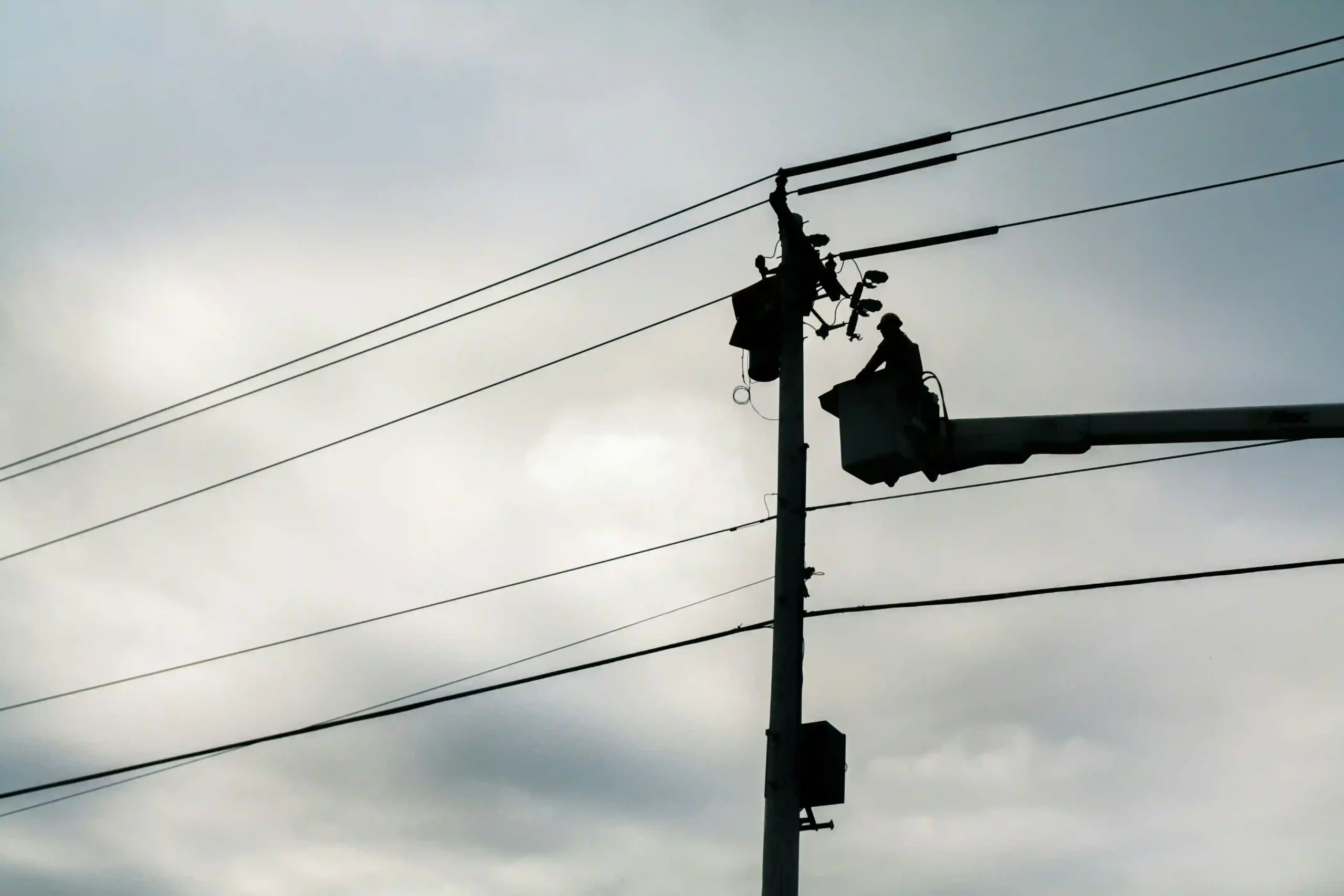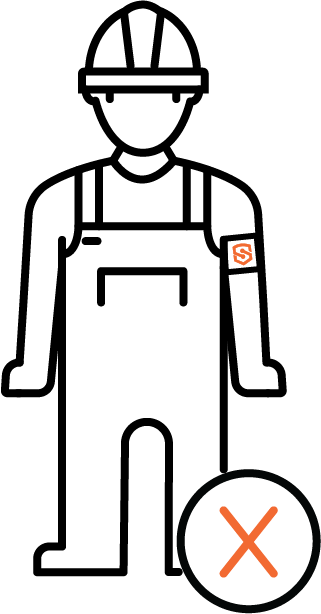Lone Worker Safety
Explore the pivotal role of Intrinsically Safe Technology in hazardous work environments for enhanced industrial safety. Read our detailed overview.
Nearly 70% of organizations reported a safety incident involving someone working by themselves in the past three years, and 1 in 5 of these incidents were described as ‘quite or very severe’. Of workers surveyed:
Nearly 70% of organizations reported a safety incident involving someone working by themselves in the past three years, and 1 in 5 of those incidents were described as 'quite or very severe'. Of workers surveyed:
Nearly 70% of organizations reported a safety incident involving someone working by themselves in the past three years, and 1 in 5 of these incidents were described as ‘quite or very severe’. Of workers surveyed:
- National Safety Council
What types of challenges do lone workers face?
Lone workers are individuals who perform their job duties in isolation, without direct supervision or immediate assistance from colleagues. They face various challenges, such as limited support, increased risk of accidents, communication difficulties, lack of direct supervision, potential vulnerability to personal threats, restricted breaks and relief, mental health strain, inadequate training and reliance on technology. Therefore, one of the highest concerns is the difficulty in obtaining help, especially in remote areas with limited cell range. The absence of immediate supervision and communication barriers amplifies the challenges, underscoring the importance of comprehensive safety measures, effective communication tools, and tailored emergency response plans to address the diverse and unique risks faced by lone workers.

What challenges do lone workers face?
Lone workers are individuals who perform their job duties in isolation, without direct supervision or immediate assistance from colleagues. They face various challenges, such as limited support, increased risk of accidents, communication difficulties, lack of direct supervision, potential vulnerability to personal threats, restricted breaks and relief, mental health strain, inadequate training and reliance on technology. Therefore, one of the highest concerns is the difficulty in obtaining help, especially in remote areas with limited cell range. The absence of immediate supervision and communication barriers amplifies the challenges, underscoring the importance of comprehensive safety measures, effective communication tools, and tailored emergency response plans to address the diverse and unique risks faced by lone workers.

Lone worker safety is vital to prevent accidents, ensure well-being, comply with regulations, and uphold organizational responsibility, fostering a secure and ethical work environment.
Communication Tools
Communication tools, such as mobile phones, two-way radios, or satellite phones serve as a crucial link, enabling lone workers to maintain regular contact with supervisors or emergency services. Immediate communication facilitates check-ins, ensures prompt reporting of incidents, and allows for quick assistance in case of emergencies. By employing reliable communication tools, organizations enhance the overall safety and well-being of lone workers, providing them with the means to stay connected and seek help when needed.Tracking and Monitoring
Comprehensive workplace education and training are common organizational approaches to managing heat stress. Employees are educated to recognize early signs of heat-related illnesses, enabling prompt identification of symptoms. Emergency response procedure training ensures a swift and effective workforce response to heat-related emergencies. The focus extends to fostering a heat-safe work culture, instilling awareness, promoting responsible behavior, and encouraging open communication regarding safety concerns. These generic educational initiatives empower organizations to build a resilient workforce actively contributing to a safer and healthier workplace in the face of heat stress.Training and Preparedness
Lone workers undergo specialized training programs that cover safety protocols, risk assessments, and emergency response procedures tailored to their unique working conditions. This ensures that they are well-equipped to identify and navigate potential hazards independently. By fostering a culture of preparedness, organizations empower lone workers to make informed decisions, adhere to safety guidelines, and respond effectively to unexpected situations. Training and preparedness initiatives play a crucial role in minimizing risks and promoting a safer work environment for individuals operating autonomously.Personal Safety Measures
Organizations prioritize the safety of lone workers by encouraging the adoption of personal safety measures. These may include providing lone workers with personal alarms, panic buttons, or other devices that can be easily activated in case of emergencies. Additionally, organizations stress the importance of using appropriate personal protective equipment (PPE) relevant to their tasks, ensuring the physical well-being of lone workers. By instilling a culture that emphasizes the use of personal safety devices and equipment, organizations empower lone workers to take proactive steps in safeguarding themselves, contributing to an overall safer working environment for those operating independently.Our product has been integrated seamlessly into many organizations across multiple industries. Overall, our solution could be a good fit for any of the following industries: utility, manufacturing, alternative energy, environmental remediation, military training, first responders, healthcare, construction and more. Our solution is especially useful for industries with lone workers or where workers are at risk of heat stress or overexertion due to heavy PPE or high ambient temperatures.
Learn more about lone worker safety and how our solution can help. Read More
How our solution helps
Although there are many ways to keep lone workers safe, not all organizations have implemented these or don’t have comprehensive tools. Our solution helps not only with GPS location-tracking but with monitoring each worker’s physiological status. With configurable threshold limits, workers and safety managers off-site will get notified in real time if a worker has reached a set limit. This helps to prevent accidents, illnesses and injuries before they happen.
Real-Time Physiological Monitoring and Alerts

GPS

TapAlert

No Movement Detection

Real-Time Physiological Monitoring and Alerts

GPS

Tap Alert

No Movement Detection

Real-Time Physiological Monitoring and Alerts

GPS

TapAlerts

No Movement Detection

Customer Feedback
“With the data we collected, we are able to create a new Heat illness and prevention program that will be far more affective for all employees. I also believe your product can be applied to lone workers.”
Jill Burke
Safety Director at Sterling Technology
Privacy and Security
Your privacy and security are paramount to SlateSafety. We’ve implemented rigorous measures to safeguard organizations and individuals, ensuring that their sensitive information is protected from unauthorized access. Our commitment to prioritizing security underscores our dedication to providing a safe and trusted platform for all users.
Customer Feedback
“With the data we collected, we are able to create a new Heat illness and prevention program that will be far more affective for all employees. I also believe your product can be applied to lone workers.”
Jill Burke
Safety Director at Sterling Technologies
Privacy and Security
Your privacy and security are paramount to SlateSafety. We’ve implemented rigorous measures to safeguard organizations and individuals, ensuring that their sensitive information is protected from unauthorized access. Our commitment to prioritizing security underscores our dedication to providing a safe and trusted platform for all users.
